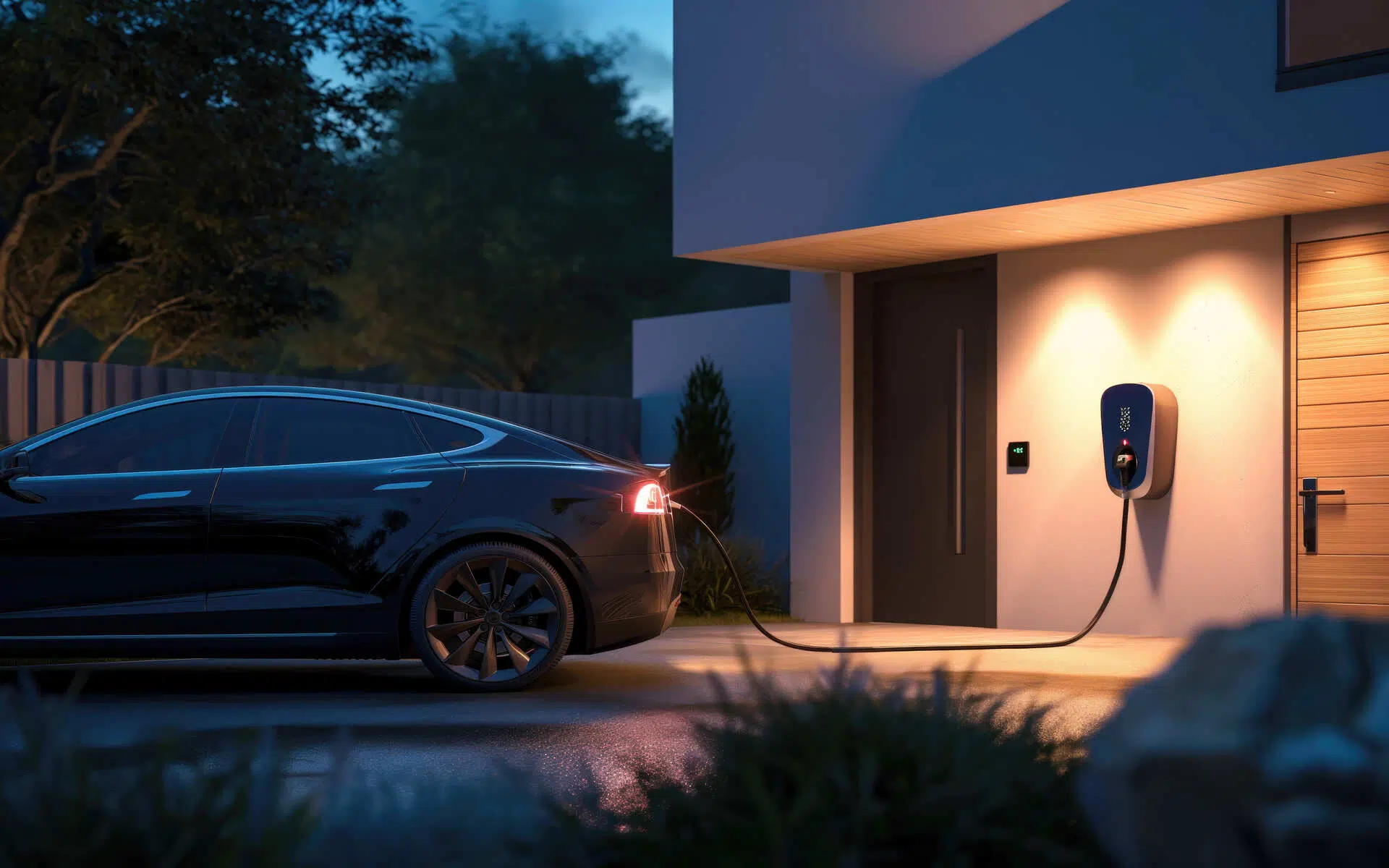Australia’s electric vehicle market is maturing rapidly, and for many drivers the next logical step is a home charger. Public networks are expanding, but nothing matches the convenience of plugging in overnight and starting each day with a full battery. Home charging is typically the most cost‑effective option too, delivering the right balance of speed, price and convenience for most owners.
Installation costs at a glance
The total cost to install a home EV charger in 2025 depends on the unit you choose and the complexity of the installation.
- Charger unit: typically $500-$2,000
- Installation: typically $750-$2,500
These ranges are indicative; actual costs vary with several site‑specific factors, including your home’s electrical supply (single‑phase vs three‑phase), the distance from switchboard to vehicle parking, and whether additional wiring or trenching is required. Some manufacturers and dealers still offer complimentary or discounted home chargers with certain models – Lexus and Polestar have been known to include chargers on selected vehicles – so check with your dealership before buying separately.
Understanding charging levels and which suits you
Not all chargers are the same. Choosing the right level depends on how much you drive and how quickly you want to recharge.
- Level 1 (trickle charging)
- Uses a standard 10‑amp household socket
- Adds roughly 10 km of range per hour
- Full charges can take a day or more
- Best as a backup or for very low daily mileage
- Suitable if you drive under ~100 km per day
- Level 2 (dedicated home wall chargers)
- Requires professional installation
- Typically 16 A or 32 A, adding about 20-40 km/hour
- The most common and practical option for Australian homes
- Recommended if you regularly drive more than 100 km/day
- Level 3 (DC fast charging)
- Found mostly at public stations
- Can reach ~80% in 30 minutes for compatible cars
- Generally not practical or economical for home installation
Popular Level 2 chargers available in Australia
Several reputable brands are available locally; listed prices exclude installation:
- Tesla – from $800
- Ocular – from $899
- Evnex – from $999
- Wallbox – from $1,345
- EVOS – from $2,200
Can you install a charger without a driveway or garage?
Yes – but it’s more complicated. Urban and apartment dwellers without off‑street parking face barriers, and new solutions are emerging. Melbourne start‑up Kerb Charge has trialled lockable kerbside chargers for private street parking in the City of Port Phillip. Those installations cost roughly $6,500-$7,000 and involve running power under the footpath to the household switchboard. Wider rollout to other states is possible, which could make charging feasible for more apartment residents.

What increases installation costs?
Key cost drivers include:
- Electrical supply: upgrading from single‑phase to three‑phase is expensive.
- Distance: longer cable runs from the switchboard add cost.
- Site work: trenching, landscaping or conduit work raises the bill.
- Switchboard upgrades or safety work: may be required for older homes.
- Smart features: chargers that integrate with rooftop solar or offer load management can cost more but may save on energy bills.
Do you need a licensed electrician?
Yes. Australian regulations require installation by a licensed electrician. When sourcing an installer, ask for:
- Proof of licence and insurance
- Specific experience with EV charger installs
- References or recent job examples
- Details of warranties for both equipment and installation
- Whether they will lodge the necessary permits and compliance certificates
Is a home EV charger worth it?
For most EV owners the answer is yes. A home charger provides convenience, reliable access to off‑peak tariffs and generally lower cost per kilometre than most public fast chargers. If your driving is minimal and you have access to free or cheap public chargers close by, you might manage without one. But for everyday convenience and predictable running costs, a home Level 2 charger is a sound investment for the majority of Australian drivers.
Conclusion
Installing a home EV charger in 2025 is more accessible than ever, but prices vary based on equipment choice and installation complexity. For most households a professionally installed Level 2 charger will strike the best balance of speed, cost and convenience. Urban drivers without off‑street parking should watch emerging kerbside solutions. Before you commit, compare unit costs, request multiple installation quotes, confirm warranty and compliance, and check whether your dealer includes a charger with your vehicle purchase.
Frequently asked questions
Q: What is the total average cost to install a home EV charger?
A: Expect to pay roughly $1,250-$4,500 total: $500-$2,000 for the charger plus $750-$2,500 for installation, depending on site requirements.
Q: Can I use a normal power point to charge my EV?
A: Yes – for slow, overnight trickle charging (Level 1) via a standard 10 A outlet. It’s slow (around 10 km/hour) and best as a backup rather than a primary charging solution.
Q: Are there government rebates or incentives in Australia?
A: Incentives vary by state and territory and change over time. Check your state government’s energy or transport websites and local council programs for current rebates or grants.
Q: How long does a home Level 2 charger take to charge my car?
A: Typically Level 2 chargers add 20-40 km of range per hour, so overnight charging (6-12 hours) is usually sufficient for most daily needs.
Q: Do I need to upgrade my switchboard?
A: Possibly. Older switchboards or limited capacity might require an upgrade, which increases cost. A licensed electrician will assess and advise.
Q: Can a home charger work with rooftop solar?
A: Yes – many smart chargers can integrate with solar and charge when generation is available, lowering running costs and carbon footprint.
About EV Evolution
EV Evolution is the leading online platform dedicated to Australian electric vehicle owners and enthusiasts. We foster a vibrant community, delivering essential EV news and insights, and enhancing user engagement through our innovative, AI-powered chatbot for dynamic discussions. Our mission is to empower Australian electric vehicle owners and enthusiasts by fostering a vibrant, AI-driven online community that connects, informs, and advances the nation’s electric vehicle landscape: How Much Does a Home EV Charger Cost to Install in 2025?
Ready to charge up your EV knowledge? Chat with our EV AI agent now and get all your questions answered!




